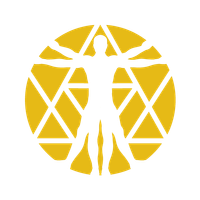There are questions in life that are very difficult to answer, and even more difficult to understand. One of the most fundamental questions that hundreds if not thousands of people have tried to fully answer over the millennia is: what is consciousness? What is it to be conscious?
The basic answer
At its core, the simplest explanation for consciousness is simply the waking state of being aware of one’s surroundings. If you are awake, can experience, can interact, and know yourself, you are conscious. Anything you can observe or experience through your senses forms part of your consciousness. But that is where the basics end, and the debates begin; philosophers, scientists, and thinkers for thousands of years have sought to understand and explain what consciousness is, and despite millennia, are nowhere near giving a concrete, definite answer.
But why is that? What makes consciousness so hard to explain and understand?
 GET YOUR HANDS ON THIS
GET YOUR HANDS ON THIS
MOOHAM LAVA ROCK BRACELET https://amzn.to/3LXDwhI
A common yet inexplicable phenomena
Every living being has experienced being conscious, and yet not everyone can even begin explaining what it is to be conscious. When we ask a person tending to someone injured, sick, or ill, the question “is he/she conscious?” what is it are we inquiring about in the first place?
The reason behind it is because consciousness isn’t something we can see, feel, or measure with instruments. Unlike programmed machines of today, wherein we can measure the machine’s capabilities based on the parameters set by their programming (which can be seen through a computer), there is no way to see a living being’s consciousness for it to be observed and measured.
Science associates thinking and experiencing with the brain, yet measuring the brain’s activity is not a definite measure of consciousness. It is as difficult as trying to understand the idea of a soul; a soul is not measured or observed easily and can be interpreted differently depending on religion and beliefs.
The fundamental problem is trying to figure out why or how consciousness comes to be in a living thing, given the arrangement of the brain’s elements. In fact, science is not even sure that consciousness can be associated to a physical mechanism, which is why experts have resorted to trying to explain why certain specific physical mechanisms and stimuli give rise to consciousness. It might not sound much, but it is a start.
Delving deeper
Over history philosophers have had their own definitions and explanations of consciousness, each one contributing to the main idea of consciousness accepted today.
Consciousness is derived from the Latin words con: together, and scio: to know. This gives an idea of the fundamentals of consciousness, that is, having common knowledge with another, or one another. This is the basis of thought of Thomas Hobbes, who wrote that “where two or more men know of one and the same fact, they are said to be conscious of it one to another.”
And yet, Latin writings also showed the phrase “conscious sibi”, which translates to “knowing with oneself”, which is more akin to Rene Descarte’s famous “I think, therefore I am” declaration, as well as Archbishop Ussher’s written statement of “being so conscious unto myself of my great weakness” back in 1613.
John Locke from 1690 defined consciousness simply as “the perception of what passes in a man’s own mind,” which is now the common layman’s understanding and explanation of consciousness.
Philosophers have thought of, and discussed, consciousness through four main topics: knowledge of consciousness, intention of consciousness, introspection of consciousness, and the phenomenal experience of consciousness. It is through these four pillars that philosophers and scientists, even up to today, are trying to unlock the secrets of consciousness.
Watch out for future posts discussing more about the mysteries of consciousness. Explore your own consciousness and expand your conscious thought with this binaural beats track for consciousness.
Using the frequencies found in the Theta range, this binaural beat is categorized under the Solfeggio Frequency called "Returning to Spiritual Order", this binaural beat meditation track was made to assist you in accessing your higher self and reconnect with Spirit. It engages with creativity, intuition, and the feeling of oneness and spiritual awareness.
Listen to this track for free, along with many others, by subscribing to our YouTube channel.
Our most popular lucid dream album is on sale! Purchase this best-seller album for only $25.00 by clicking the image below:
Related articles:
Meditation Improves Business Productivity
Meditation for Physical Performance
4 Kinds Of Meditation That Will Bring Your Business To The Next Level
Group Meditation Is The Untapped Team Building Activity To Increase Productivity
Transcending Barriers: Explaining The Religious Ties And Answering The Supposed Dangers Of Meditation
Check out these amazing products:
 |
| Learn To Use Your Natural Ability; To "Channel" Your Life-force Energy, Heal Your Family, Friends (and Yourself) And Attain The Skills Of A Master Reiki Healer |
 |
| Combine the Power of Hypnosis, Lucid Dreaming, Meditation, Astral Projection, Astral Sex, The Third Eye and the Akashic Records to bring Peace, Clarity, Balance and Happiness back to Your Life. |
Click Here to Stream Brainwave Music for Free












